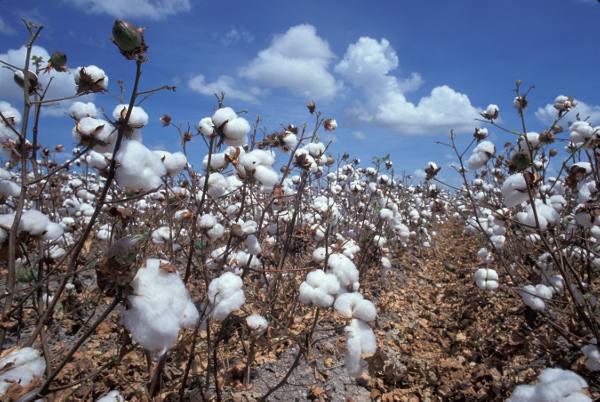July 17, 2012

If it’s true misery loves company, drought-hammered Midwestern farmers should find lots of company in Texas, said a Texas AgriLife Extension Service agronomist.
“Certainly, we’ve had very short rainfall in many areas of the state, and we’re looking at less -than-average (cotton) crop yields over most of the areas I’m familiar with,” said Dr. Travis Miller, AgriLife Extension agronomist, College Station.
Miller said the same could be said of most crops in Texas, despite recent rains in parts of the state.
“We’ve had a lot of rain along the Gulf Coast, and through parts of the Hill County and Austin,” he said. “All were good rains, but most of it came too late for crops.”
Miller said he expected cotton yields to be all over the place. In the Gulf Coast area, where cotton was being harvested, there was some cotton yielding in the 200- to 300-pound range and better. In the Rolling Plains and large parts of the South Plains, farmers were expecting a lot of failed acres. In other parts of the Rolling Plains and South Plains, farmers who had timely plantings were holding on, hoping for more rain.
From AgriLife Extension county agent reports, some cotton has already been replanted to other crops after being zeroed-out by insurance adjusters. However, cotton in a few areas, such as the Panhandle and South Plains counties of Cochran and Deaf Smith, was doing reasonably well thanks to recent rains and excellent heat units. There were also a few reports of cotton doing well in North Texas.
From fellow AgriLife Extension agronomists, Miller said he’s heard of some good grain sorghum yields along the Gulf Coast, with reports of 5,000-pound yields per acre – but some much less.”
Soybean plantings, not a common crop in Texas on an average year, were down this year because the crop is not as drought tolerant as others.
“When soybeans are flowering and setting pods, it’s pretty important they have a shot of water,” Miller said.
If there are any bright spots, it’s that commodity prices are so high, he said.
“We’ve got sharply increased prices for the crops that we do have, and sometimes if you have a very high price you can compensate for the low yields,” he said.
More information on the current Texas drought and wildfire alerts can be found on the AgriLife Extension Agricultural Drought Task Force website at http://agrilife.tamu.edu/drought/.
You May Also Like




